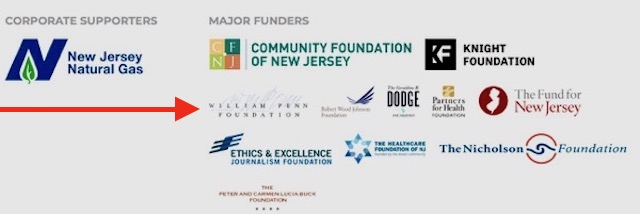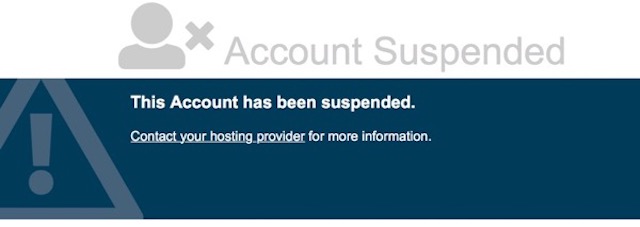Another NJ Spotlight Corporate Roundtable Scam
Panel on Delaware River Includes Corporate & Anti-Regulatory Advocates
Dupont, PSE&G, & Corporate Consultants Advance Agenda Behind The Scenes
My email in-basket was loaded with another invitation to a NJ Spotlight Roundtable, this one on the Delaware River, innocuously titled:
- Health of the Delaware River: Where Are We Headed?
Having worked on water resources in NJ for decades – including drafting NJ’s Watershed Management Act, the Highlands Act, and DEP regulations regarding Category One waterbody designations and buffer protections – it was not difficult to immediately detect the scam, based on a cursory analysis of the topic, the usual suspects (i.e panelists), and the usual dishonest stealth tactics (e.g. masking anti-regulatory initiatives behind “green” sounding projects, advancing corporate interests via representation on Boards and funding of non-profits, and elite Foundation funding).
Let me explain all that, beginning with the topic.
There are two basic and conflicting policy approaches to protecting water resources:
A) The Clean Water Act based planning and regulatory model. This science and law based model is enforced by a host of programs implemented by federal, state, regional, and local government agencies, under formal transparency, accountability and public participation processes subject to judicial review and legislative oversight, and democratic public accountability.
B) The non-governmental watershed or estuary approach. This model is a private, voluntary, “partnership”, market driven, and local model, stressing individual consumer and lifestyle choices. It is a non-regulatory initiative overseen by corporate influenced and private elite Foundation and corporate funded non-profits, a program developed in the absence of democratic principles, and with no transparency, accountability, or judicial, legislative, or public oversight mechanisms. (If you think I exaggerate, just try filing a public comment, request for public hearing, or OPRA request for public documents with the WM. Penn Foundation about their $100 million Delaware River program!)
Obviously, corporations, developers, and polluters prefer Alternative B.
Historically, environmental groups preferred Alternative A.
But that preference has been undermined recently as certain corporate influenced and Foundation funded conservation oriented groups have sold out or co-opted the more aggressive regulatory oriented groups. At the same time, those formerly regulatory oriented groups have sold out for the Foundation grants, access to politicians, and Spotlight roundtable invitations (I’m talking about you, Doug O’Malley and “strategic science” communicator Dana Patterson, who surely knows better after battling Dupont in Pompton Lakes).
These are some bold claims, so let me be specific, to illustrate how NJ Spotlight is masking these fundamental policy issues and conflicts and thereby duping readers, violating journalistic norms, and betraying the public interest.
I) Corporate Interests Advanced By Stealth and Co-Optation
The NJ Spotlight panel, on first impression, appears to be balanced, if not dominated by advocates of clean water.
But, the panel needs to be considered in context.
The panel includes Kathy Klein, Executive Director, Partnership for the Delaware Estuary (PDE).
PDE sounds like a public interest oriented group, and if you read their mission and vision statement, you could think that:
The Partnership for the Delaware Estuary, host of the Delaware Estuary Program, leads science-based and collaborative efforts to improve the tidal Delaware River and Bay,
But the word “collaborative” gives it away. That term opens the door to all kinds of “collaboration” and “partnerships”, including with major corporate polluters, like Dupont, in corporate efforts to dodge costly regulatory enforcement, like NJPDES permit and TMDL cleanup requirements.
PDE has killed the Dupont link on their “science” webpage – here’s why I get when I hit the link to the Delaware River Watershed Initiative (which I assume is the Penn Foundation $100 million project):
This can only be understood as an effort to hide that as well as Dupont collaborations, which include:
Clear Into the Future: A DuPont Delaware Estuary Initiative – (DE / NJ / PA)
PDE has huge undisclosed conflicts of interest, including taking money from Dupont:
The DuPont Clear into the Future® (CITF) program has awarded grants and sponsorships totaling $123,000 to 15 organizations from Pennsylvania, New Jersey, Delaware, Virginia and West Virginia in support of their work to improve and enhance the Delaware Estuary and other ecosystems where DuPont employees live and work. This is the first year that the program has considered applications in support of conservation work in communities beyond the Delaware Estuary.
“Protecting and enhancing ecosystems like the Delaware Estuary through research, conservation education and environmental stewardship are central to our core values at DuPont,” said Linda J. Fisher, vice president, DuPont Safety, Health & Environment and Chief Sustainability Officer. “We are extremely pleased to play a role in supporting the important efforts of this year’s grantees and we thank them for their contributions to environmental conservation.”
Eight non-governmental organizations (NGO’s) and three universities received grants, including: Delaware Greenways, Inc., Delaware Nature Society/DuPont Environmental Education Center, James River Association, Nature Conservancy-Delaware Chapter, New Jersey Audubon Society, Partnership for the Delaware Estuary, Pennsylvania Sea Grant, Stroud Water Research Center, Rutgers-Haskins Shellfish Lab, Delaware State University and Drexel University.
Note that Dupont also has taken down the links to their cynical “Clear Into The Future“ program (and they even Registered it! (R)). I blasted that Dupont scam, most recently in a May 10, 2018 post, when the Dupont link was working.
Also note that Drexel, where NJ Spotlight Panelist Carol R. Collier works and gets paid, also receives Dupont funding.
But, let’s also look at the PDE Board of Directors, where we find more corporate interests, conflicts, and stealth influence.
- The Chairman is Joe Savage, of Wood Environment and Infrastructure Solutions, a major corporate consultant to, among others, oil, gas and chemical polluters.
- The “Member at Large” is Helen L. Gregory of PSEG. Need I say more about PSEG’s interest in the Delaware River and Bay or PSEG’s longtime use of corporate cash to bribe NJ conservation groups?
- The Treasurer is Jill Voorhees of SWM International, a major polluter and corporate chemical manufacturer.
- The Secretary is David J. Athey, P.E. from AECOM, a major global corporate engineering and consulting firm.
- A “Member at large” is Lawrence D. Malizzi, PG from Ramboll, a major corporate engineering firm.
- The Vice Chair is Carol Collier from Drexel, who as we noted has been funded by Dupont and who knows how many other corporate interests.
The entire Board of Directors of PDE is either corporate or has corporate funding or conflicts of interest.
These corporations have huge economic interests in the Delaware Watershed and huge incentives to divert public attention away from costly regulatory enforcement.
II) The NJ Spotlight Topic Summary Biases Issues
NJ Spotlight, at best, naively and narrowly frames the issue with a focus on the Trump EPA:
But now the gains are threatened by the Trump administration’s final rollback of the Waters of the U.S. Rule that protects smaller wetlands and seasonal streams from pollution or development. Since those sources feed larger waterways like the Delaware River – whose watershed supplies drinking water to some 13 million people – the measure could set back years of progress, advocates say.
It is easy to bash the Trump EPA on what amounts to an exaggerated controversy over the WOTUS rule – that’a a convenient target and diversion from all the other real issues at play.
One would think NJ Spotlight reporter Jon Hurdle, who has written a lot about toxic chemical and regulatory issues, would understand that.
III) Elite Foundation Funding Not Disclosed to The Public
The Wm. Penn Foundation has distributed $100 million to non-profits for work in the Delaware Watershed.
As I’ve written before, the Wm. Penn Foundation and the groups they fund are classic examples of advocates of Alternative B above.
Penn funded groups are on the NJ Spotlight panel and NJ Spotlight itself receives Wm. Penn Foundation funding.
At a minimum, these groups and NJ Spotlight have conflicts of interests, given that funding, the Wm. Penn policy agenda, and funding to NJ Spotlight who is sponsoring the Panel.
IV) Delaware Estuary & Watershed Model Versus The Clean Water Act Regulatory Model
I don’t want to get too far into the weeds, but here is an EPA description of the National Estuary Program:
The NEPs are located in a variety of institutional settings, including state and local agencies, universities and individual nonprofits. In overseeing and managing the national program, EPA provides annual funding, national guidance and technical assistance to the local NEPs…. [Note: this does NOT include EPA or State regulation and enforcement]
The NEP challenges and priorities are defined by local, city, state, federal, private and non-profit stakeholders. [Note: Priorities are not based on science and law.]
Each NEP has a Management Conference (MC) that consists of diverse stakeholders and uses a collaborative, consensus-building approach to implement the CCMP. Moreover, each MC ensures that the CCMP is uniquely tailored to the local environmental conditions and is based on local input, thereby supporting local priorities.
A “collaborative, consensus building approach” may sound just great, but it abdicates government responsibility, outsources policy to private groups, and effectively provides control of the agenda and a veto power to corporate polluters and developers. Polluters and developers will never allow “consensus” to form around any science or regulatory mandate that will cost them money. Period.
The national estuary program was created and designed as an alternative to federal and state government enforcement of the Clean Water Act regulatory model.
Polluters, developers, and other “local” economic interests love it, including the elite Foundations and the well fed elite non-profits that are funded by EPA, States, Foundations and corporate polluters.
The NJ Spotlight panel, the panel’s topic, and the panelists themselves all are advocates of the national estuary model, or what I call Alternative B above.
Thus, readers and the public are being sold a corporate bill of goods that has little to do with clean water.
V) The Corruption of Journalistic Standards And Duping Of The Public
NJ Spotlight is funded by the Wm. Penn Foundation. The Wm. Penn Foundation has an anti-regulatory and corporate friendly agenda. The Wm. Penn Foundation funds groups that are named by Spotlight to the Panel. Other Panelists are recipients of corporate money or governed by corporate interests on their Boards.
NJ Spotlight reports none of the above.
That failure to report – or even disclose the corporate interests and policy conflicts embedded in their Panel – violates journalistic standards of disclosure, transparency, ethics, and conflicts of interest.
In fact, the corruption goes beyond non disclosure. As I highlight above, there are efforts to mask the role, influence, and funding by corporate interests, including Dupont, and even mention the existence of a controversial policy debate between fundamental policy alternatives A and B.
Did I make the case?
Word.

